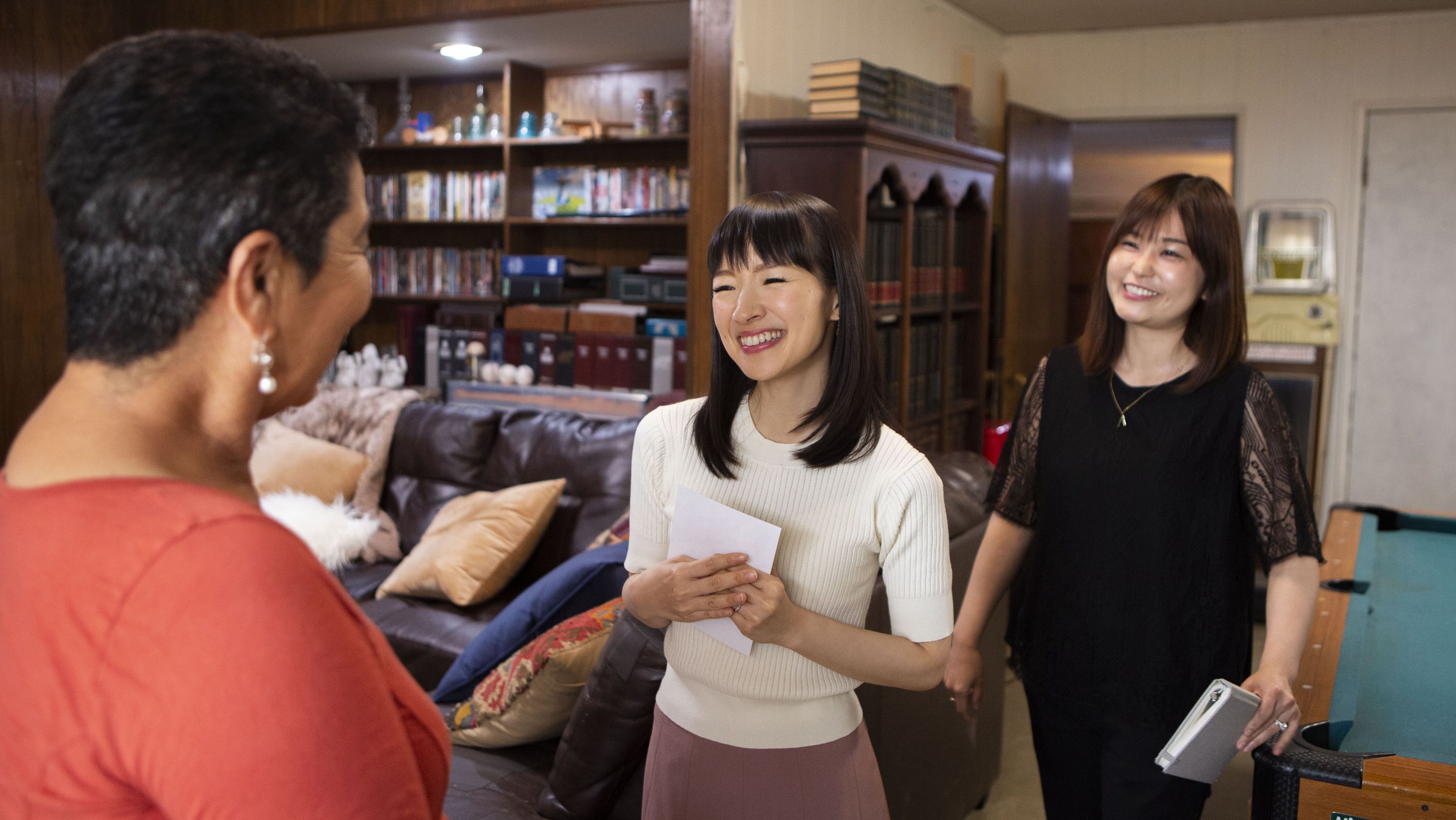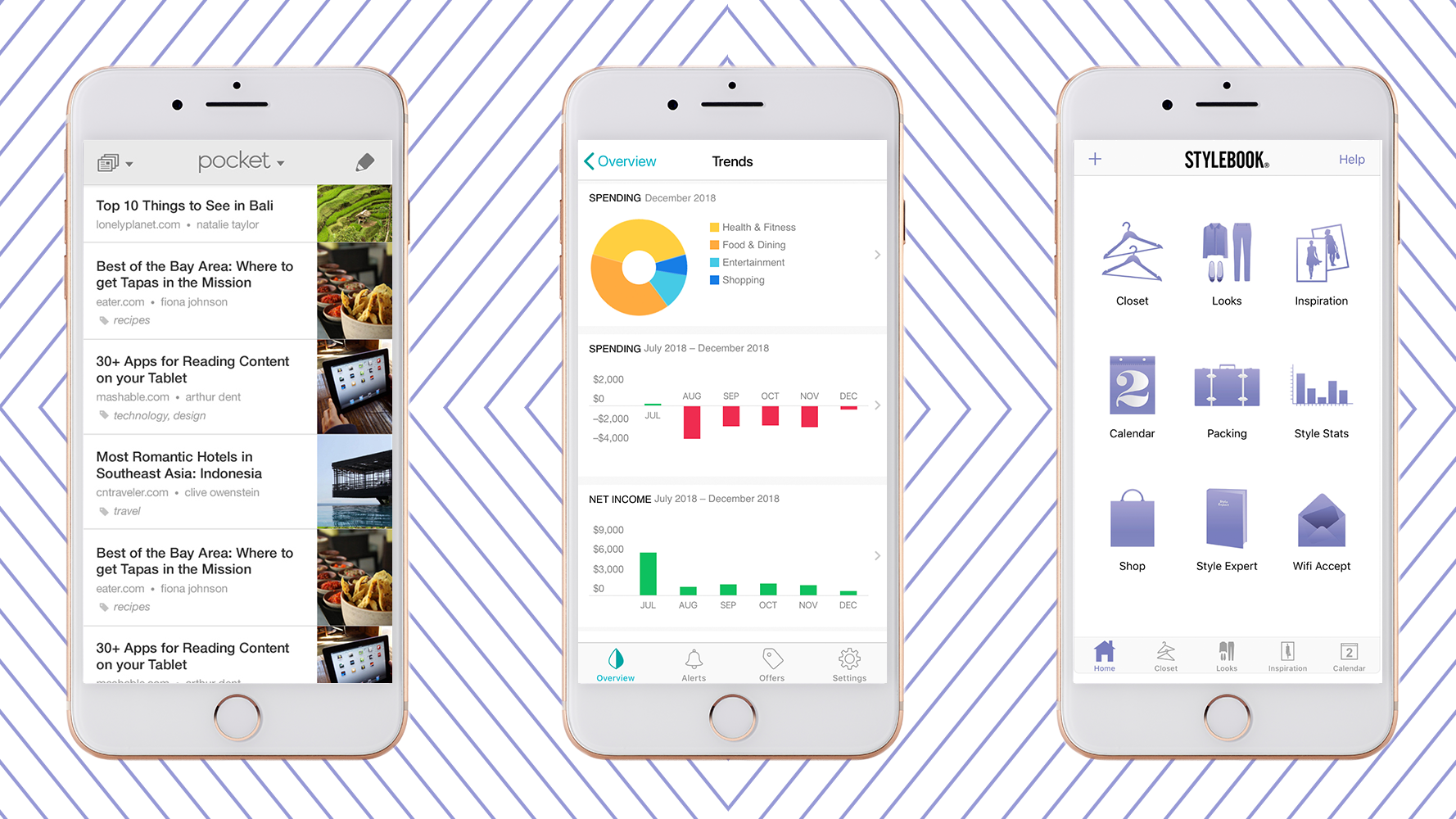The Life-Changing Magic of Marie Kondo
The home-organizing expert has a new Netflix show premiering January 1.
Marie Kondo’s decluttering technique has always been refreshingly strange: Make a pile of all your clothes—down to the last pair of socks—then discard anything that doesn’t “spark joy.” Repeat this with books, papers, and the contents of your kitchen cabinets.
Kondo herself, known for her KonMari Method, is an unlikely American guru. The middle child of a doctor and a housewife, she speaks halting English and admits that she relates better to inanimate objects than people. (She is surely the only author to thank “all my possessions” in the acknowledgments of her book.) Yet Kondo, 34, now sits atop a small decluttering empire. Two years ago, she moved from Tokyo to California to run her San Francisco–based company, KonMari Media Inc. It now has 10 employees and has certified hundreds of consultants in her trademarked tidying method. Kondo’s 2014 book, The Life-Changing Magic of Tidying Up, has sold more than eight million copies worldwide—half of those in the U.S.—and spawned a manga edition, an illustrated guide, a calendar to track joy, and a line of $89 organizational boxes. A reality TV show, Tidying Up With Marie Kondo, launches January 1 on Netflix.
We've lost touch with how we relate to things. Everything becomes quantity over quality.
Kondo, who spent five years as a Shinto shrine maiden (performing religious duties) and describes storage as a “sacred art,” insists that her professional goal is simply to spread the gospel of home organization. “It’s my ambition that as many people in the world not just learn about the KonMari Method but completely finish tidying their home,” she says.
Her show follows a born-again narrative. In each episode, Kondo enters a different Los Angeles household. The occupants aren’t hoarders, just middle-class Angelenos living amid the consequences of cheap imports, Black Fridays, and years of recreational and online shopping. Speaking to her clients through an interpreter, Kondo sometimes starts by absolving them for having so much stuff. “Everything inside our home serves a function, it came into our lives for a specific reason, it’s sort of bound by fate,” she tells me. “That just means that they have that many opportunities to confront themselves.” She then blesses the home and watches as her clients debate whether their old sweaters and unworn sneakers bring them joy or not. There are emotional breakdowns and revelations, like those from the son of poor Guatemalan immigrants who fears relinquishing any of his American bounty and from the recent widow reluctant to part with her late husband’s clothes.
In one scene, she watches patiently as a man wrestles with whether to throw out a disused mailbox that was in his garage. I just wanted to shout, “Get rid of it!” but Kondo patiently asks him, “This is something that you would like to keep as part of your life going forward?”
“When you put it that way, no,” he replies.

Kondo asking a client if her items spark joy.
Once her clients pass through this crucible, the sprite-like Kondo returns for a final scene in which, sitting in their newly tidy living rooms, they tearfully thank her for changing their lives. This transformation has always been key to Kondo’s message. She jumps from smart ideas about clearing clutter to claiming to have discovered (and trademarked) the formula for the rest of life too.
Get exclusive access to fashion and beauty trends, hot-off-the-press celebrity news, and more.
“After you have a tidy home, then you’re in a stage to consider what sparks joy for you, whether in your work, your human relationships. You can apply the method to all different dimensions of your life,” she explains. We can say arigato and goodbye to the people and jobs that don’t spark joy for us either.
This is perhaps a bit too tidy. What happens when these American families start accumulating sneakers again? Of course it feels good to get your house in order, but what about kids, bills, politics, and the joy of shopping? Maybe the answer is to buy Kondo’s joy-tracking calendar or to sign up for one of her seminars. There are, no doubt, more KonMari offerings on the horizon. As Kondo has surely discovered, in the land of plenty, we can never get enough.
A version of this article appears in the February 2019 issue of Marie Claire.
RELATED STORY
